Ayodhya: Indore engineer Jitendra Panchal is carrying a grudge. Hindu men used to be 8 feet tall in their glory days, during the time of the Ramayana and Mahabharata. That was an age of duty, divinity, dharma. Today, they are a paltry 5ft — rarely even 6ft, he says.
And Panchal’s first visit to Ayodhya to see the brand new Ram Temple only underlines the glory of what could have been — and what he thinks Hindus lost. And what Hindus could have been if only history, even evolution, didn’t work against them.
“Of course, as Hindus, we feel bad for ourselves. How can we not?” he asks, digging his hands deeper into his jacket pockets to defend himself from Ayodhya’s cold fog. “So many bad things have happened to us civilisationally. In life, we feel the fear of losing things — because we have lost so much.”
The city of Ayodhya now symbolises more than just the fulfilment of a centuries-old Hindu dream. It is now fast emerging as the first port-of-call for all resurgent Hindus to fuel themselves. But it’s especially a lighthouse for those Hindus who feel that they have been wronged and have carried a sense of persecution for years, even centuries. This self-pitying Hindu is a powerful voting bloc now. They have fed the BJP politics of the past three decades. From resenting—and also strangely coveting—Taj Mahal’s global popularity, Islam’s strictness, and Muslim male virility; the Hindu mind is ill at ease in Modi’s India.
So many bad things have happened to us [Hindus] civilisationally. In life, we feel the fear of losing things — because we have lost so much.
– Jitendra Panchal
The decline of the height of the average Hindu man is a big issue for Panchal. Hindus today don’t eat the same food, and he says the strongest genes died at war, protecting Hindu culture from history’s multiple ‘invasions.’ Even evolution has sided against the Hindus — at least Punjab and Haryana still produce tall men, says Panchal, what about the rest of India?
“Don’t you feel that we have lost a lot? That we have been damaged? From then till now?” he asks, saffron beams of light glittering through the fog behind him.
The idea of Hindu victimhood has become a trope across India, turning up everywhere from political rallies to new historiography to primetime TV debates to social media chats. It’s moved from academic conjecture to active public conversation, fuelling a new brand of politics in India and abroad. It’s not a “500-year-old story” like the narrative behind the Ram Temple — it’s an idea that took root in the Indian public imagination in tandem with the rise of the Hindu Right.
And now, with the consecration of the temple in Ayodhya and the emergence of Yogi Adityanath as a defender of the Hindu faith and protector of temples, the devout Hindu has found a playbook for model governance. In this world, ‘Ram’ and ‘Rashtra’ go hand-in-hand — and any age before that was a disservice to India’s majority Hindu community.

In their minds, Hindus have been cheated by history, science, and politics; deliberately denied protection from foreign enemies. Panchal says Hindus have been sidelined and denied both development and recognition, from history textbooks to government schemes.
This collective anxiety about Hindu helplessness only sharpens the perceived need for a revival of Hindu strength.
“There are no easy heroes and easy foes,” says historian Neeti Nair, author of Hurt Sentiments: Secularism and Belonging in South Asia. “Yet the Hindu Right propagates that easy history of one enemy and one victim. What we’re seeing at this moment is the success of the RSS’ indoctrination over the past 75 years.”
Also Read: Ayodhya is being rebooted, rebuilt, & reimagined—Gen Z pilgrims, luxury hotels, 3D shows
Uttar Pradesh ‘better for Hindus’
Former businessman A Lakshmanan would give up everything and move from his native Tamil Nadu to Uttar Pradesh permanently. It’s not because he prefers the lifestyle, the weather, or the job opportunities — it’s because he says Uttar Pradesh is a better place for Hindus.
“Here, people respect Hindus,” says Lakshmanan. “I’ve been performing well as a citizen at home but have not been recognised. Here, in Uttar Pradesh, I’ve done nothing but I’ve been recognised.”
He dismisses the lack of development in Uttar Pradesh in comparison to Tamil Nadu, India’s most industrialised state. “North Indians are more uneducated, you have to forgive them,” he says, and a group of Tamil pilgrims around him nod in agreement. “People are educated in Tamil Nadu and yet they treat Hindus so badly,” says Ramachandran, a Tamil pujari.
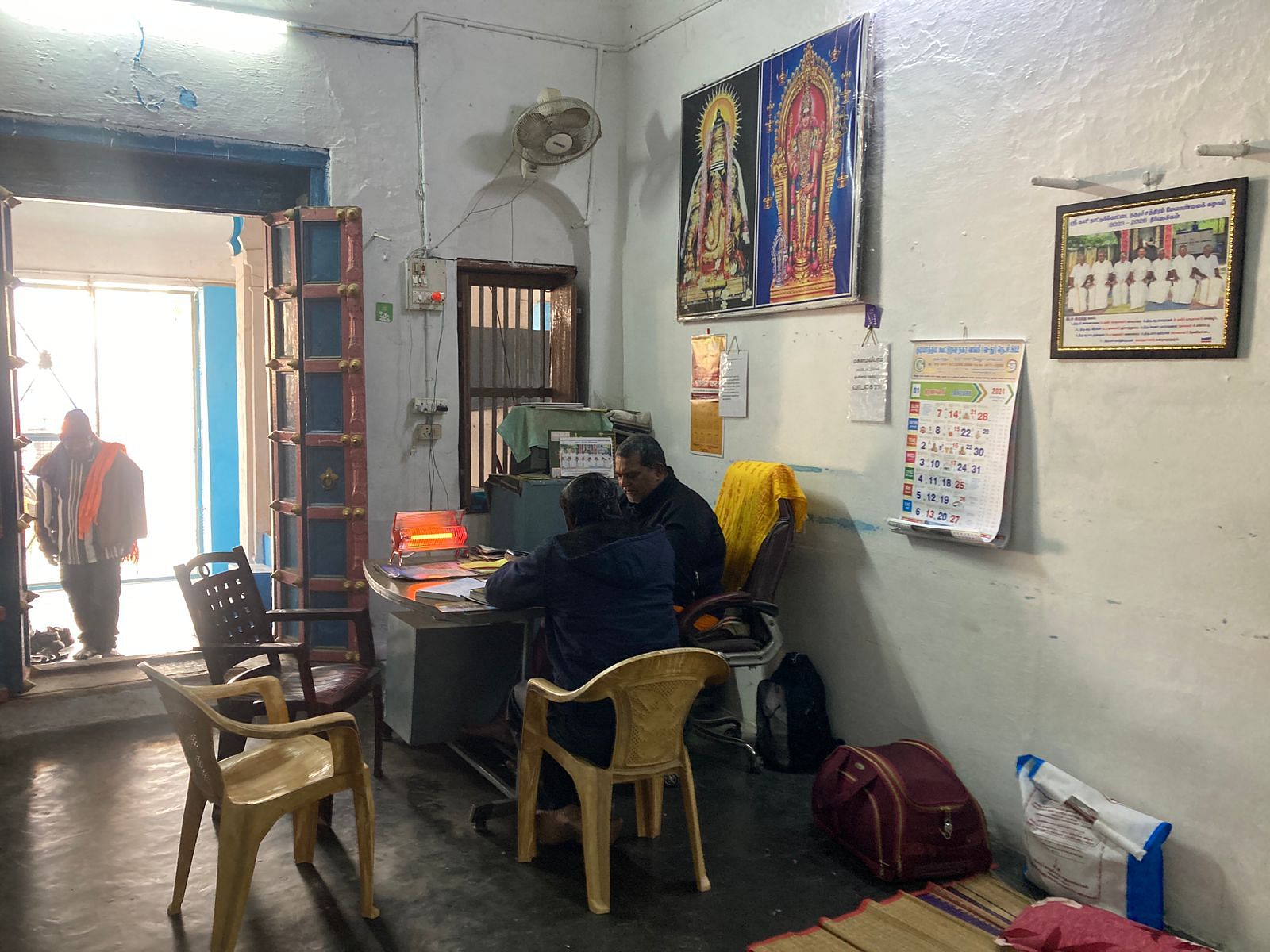
In Lakshmanan’s eyes, Uttar Pradesh has emerged as a worthy state for Hindus because of Chief Minister Yogi Adityanath’s avowal to protect all temples. It’s a far cry from the Dravidian politics of Tamil Nadu, where divisions are on caste lines instead of communal lines. Lakshmanan, who belongs to the ‘forward’ mercantile Chettiar caste, says that Hindus are mocked for displaying their faith — he distinctly remembers being ridiculed for his “temple dress”.
This is despite the fact that Tamil Nadu has a large number of temples and a recent survey that proves South India isn’t necessarily less religious than the Hindi heartland.
People are educated in Tamil Nadu and yet they treat Hindus so badly
-Ramachandran, a Tamil pujari
Yet, Lakshmanan says Hindus are not respected in his native state, even though they are the majority. He cited the oft-repeated example of the Hindu Right wing: that Muslims and Christians are protected as persecuted minorities but Hindus are not.
“You name any temple, Yogi ji has done his best to support it,” says Lakshmanan, bemoaning the treatment of Hindu priests in Tamil Nadu, who he says haven’t been paid in years — while Christian and Muslim priests earn well, according to him. “It is a fact that the South respects Muslims more. It is also a fact that the South doesn’t respect Hindus as much.”
He came to Ayodhya to volunteer at a Chettiar kshetra, and felt so validated as a Hindu that he has decided to stay behind and occasionally visit his family when he can.
Even politically, he says that his support for the BJP and the RSS puts him in a ridiculed minority in Tamil Nadu. To him, the BJP has put India on the map — he gives the example of how “the world now trades in rupees after the Ukraine-Russia war,” referring to the fact that Russia and India agreed to settle trade in rupees.
It’s a half-truth that has travelled through WhatsApp university, fuelling pride in the Indian government. Lakshmanan points to another YouTube video he watched recently in which the speaker talks about Prithviraj Chauhan’s valour — it was the first time in his 54 years that he’d heard of Chauhan. He explains that Mahmud of Ghazni had invaded India 17 times and that schoolchildren were taught this in history classes, but were never taught of Chauhan’s successful defence. It’s a technicality that Chauhan’s Rajput clan actually defeated Mohammed Ghori in 1191, and not Ghazni.
All this only adds to the general feeling that Hindu might was disrespected by history — and that disrespect has carried through into modern, secular India. It is why the Ram Temple symbolises an important step towards avenging a past in which Hindus were systematically suppressed.
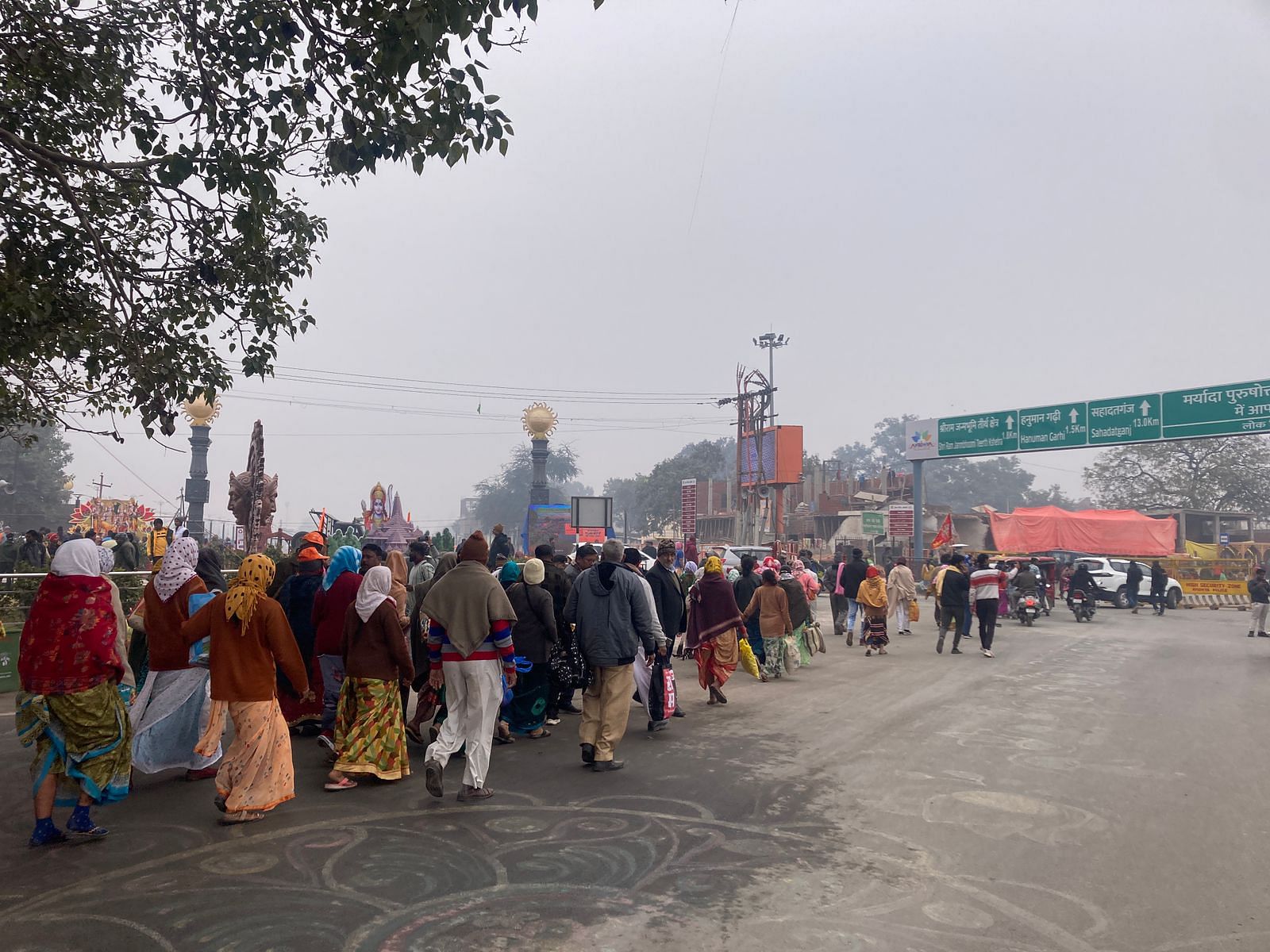
But Lakshmanan and the other Tamil pilgrims he is with say they believe in the principle of secularism. “Where else will India’s Muslims go?” asks Lakshmanan. “India is secular, and should be — Ram Rajya was also a secular state,” he says. His anger lies more with previous governments for trying to “suppress” Hindu pride at the expense of protecting minority communities.
“I’m proud of being a Hindu. Even if you suppress me, I’ll rise,” he adds. “That is true Ram Rajya.”
Also Read: ‘Hindustan is finally for Hindus.’ Ayodhya Express reaches Ram temple
The sidelining of Hindus
Panchal travelled nearly a thousand kilometres to get to Ayodhya, hopping from train to bus to make it to the Ram Temple. He imagined himself following in the footsteps of Ram’s long journey home.
Panchal, a technical engineer, was born and raised in Indore in what he described as a typical middle-class upbringing — with strict parents and a much older sister who is married and settled in metropolitan Delhi. He describes himself as politically neutral and spiritual, having spent time in his youth in an ashram where his gurus taught him the “true meaning” of his faith.
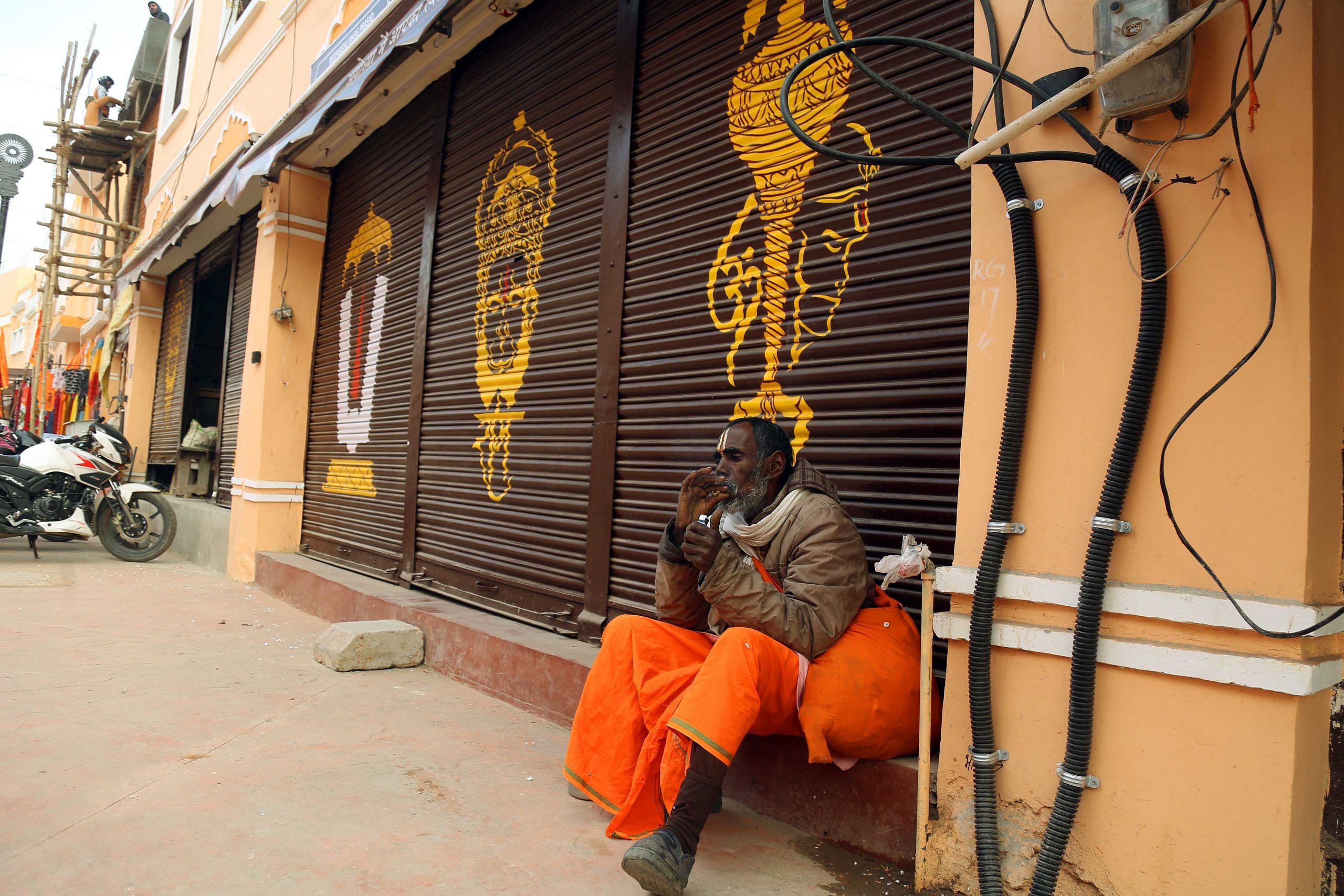
It was in his childhood that he became aware of inequalities. He was always encouraged to “think freely” as a Hindu — he says he was allowed to make his own choices, especially when it came to things like choosing his own clothes and being allowed to eat non-vegetarian food, except for on Tuesdays. Hindus across India have different cultures, but are united under the larger umbrella of their religion — Malayalis from Kerala might eat beef and use coconut in their food, but their fundamental beliefs are the same as his, according to Panchal. He also cited the spread of Hinduism across South and Southeast Asia as examples of how Hinduism allows cultures to develop independently.
But he noticed the “religious and sociopolitical pressure” placed on the Muslim community, from which he has no friends. These “pressures” include young Muslim girls being made to wear the hijab, which he described as a total absence of choice.
“Muslims have to do things they don’t want, like cover themselves up. Us Hindus are open. Muslim kids are brainwashed at a young age. I’ve seen these things with my own eyes! I’ve seen and experienced a lot!” says the 30-year-old. “Hindus were in danger in history, but everyone has forgotten that. Now people think others are in danger.”
The exact instances of when Hindus were in danger are lost in the chilly wind. Panchal is sick of questions poking holes in his narrative. He rolls his eyes, and then patiently explains.
“Hindus are divided amongst themselves in India today, but Muslims and Christians are united,” says Panchal. “Because they are under pressure. Pressure binds them. And if you’re not in a group in India, you are unsafe.”
The myth of minority appeasement looms large in the Hindu mind, coupled with anxiety over the strong identity markers of Muslim and Christian communities.
However, plenty of research — like the recent Aleph publication Love Jihad and Other Fictions: Simple Facts to Counter Viral Falsehoods — indicates that government spending on pilgrimage schemes and support for religious institutions have been skewed towards the Hindu majority anyway.
Hindus were in danger in history, but everyone has forgotten that. Now people think others are in danger
-Jitendra Panchal
Hindus across India are connected even though Hinduism encourages differences in thought, belief, and worship. But politics has driven them apart, according to Panchal. That is until now — the consecration of the Ram Temple in Ayodhya has finally given Hindus across India a chance to unite for a glimpse of glory.
“What we lost, we were able to find again,” he says. “But it’s something that we should have gotten a long time ago. You can see the damage done to India,” he adds, waving his arms around him. “Ayodhya is a case study for people who didn’t know the beauty of India before.”
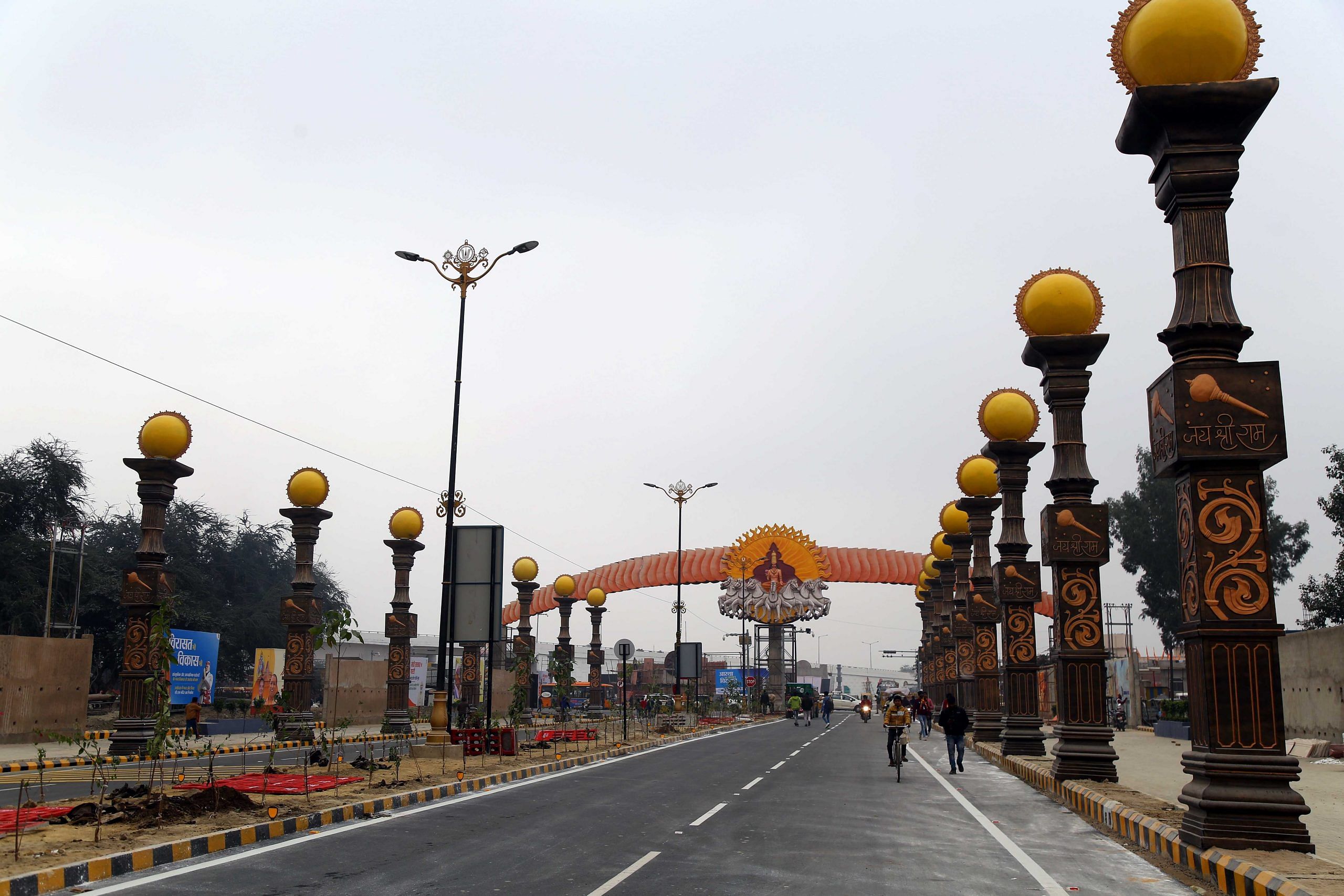
Lack of Hindu spaces
But Ayodhya is also proof of what was denied to Hindus for centuries.
Panchal and Lakshmanan both agree that Ayodhya doesn’t stack up to their native home — clean Indore and metropolitan Chennai. And yet it is the manifestation of their faith.
Those who have travelled from all over the country to see the splendours of Ayodhya are not blind to what exists beyond the veil of Rampath, the road that leads to the Ram Temple. They see the abject state of affairs: dirty roads, dilapidated buildings, and decrepit surroundings.
Look at a city like Delhi, Panchal says. Monuments are intact and history is tangible in Delhi, because “foreign invaders” had razed the Hindu spaces that existed before that to the ground.

Academics like Tanika Sarkar and Sudhir Kakar have written about this persecutory fantasy. In an analysis of Sadhvi Rithambara’s speeches, Sarkar and Kakar have both written about how people like her amplified these anxieties in Ayodhya. Rithambara, the founder of Durga Vahini, was able to cultivate a sense of Hindu loss and humiliation at the hands of Muslim, British, and Congress “rulers”.
“As in individuals, where persecution anxiety often manifests itself in threats to the integrity of the body, especially during psychotic episodes, Rithambara’s speech becomes rich in the imagery of a mutilated body. Eloquently, she conjures up an India—the motherland— with its arms cut off, Hindu chests cut open like those of frogs, rabbits, and cats, the thighs of young Hindu women burnt with red-hot iron rods; in short, the body amputated, slashed, raped,” writes Kakar in his 1995 book Colours of Violence: Cultural Identities, Religion, and Conflict.
The narrative — that the “sons of Babur” destroyed Hindu temples, forced the Partition of India, and then enjoyed special treatment from Congress governments, and therefore are threats to the Hindu community — has been repeated again and again in the Sangh Parivar’s literature and speeches.
It’s part of why depictions of Ram have also changed. “Even in the visual representation, there was a distinct shift – from faith to political use of the image of Ram. This took two forms: the first was the removal of Sita and the other was a newer heroic, muscular image of Ram,” writes photographer Prashant Panjiar on Ayodhya. The fear of the lustful, virile Muslim male out to defile Hindu women is wrapped up in this too.

And now this is repeated as a generalised fact, especially to people like Panchal, who does not feel the need for any specific historical examples to back his claims. The visual evidence is enough.
One doesn’t have to look further than the Taj Mahal, says Panchal. “Yes, it is beautiful, but what is its importance? Do Hindus have any connection to it? No,” he says, questioning why a monument like the Taj Mahal was portrayed as a symbol for India.
“In Ayodhya, you can see how this holy city was not given importance for so long,” says Panchal. “That is why things are like this. Yes, sure, the development of India has happened under the Congress, we are modern because of them. But the BJP is doing more for Hindus, rather than foreign elements.”
Yes, it [Taj Mahal] is beautiful, but what is its importance? Do Hindus have any connection to it? No
– Jitendra Panchal
This logic echoes amongst a group of Telugu women, dressed in shiny silk saris, who have travelled from Vijayawada to Ayodhya. “Strong leadership is what makes a difference,” says Viji, a 26-year-old housewife. “If one party was there in India it would be easier to do more.”
It’s a cyclical narrative that undoes Panchal’s theory of diversity amongst Hindus, but he says that the BJP holds the key to India’s future, it is synonymous with Ram Rajya. “Whatever you call it — politics, diplomacy, or Ram Rajya — it’s all coming true now. Before the BJP, it was just thoughts. Now it is action,” says Panchal. “If they’ve brought us this far, they can take us further. It all depends on the capacity of us Hindus to work together.”
Also Read: Ayodhya wasn’t Republic’s end. BJP’s challengers can learn from Indira’s fall, Modi’s rise
The saviour of Hindu victims
But the tides are turning for beleaguered Hindus. The consecration of the temple is not the culmination of a divine struggle, it is the beginning of a new political dawn.
The BJP’s political messaging has not only been headlining Hindu victory, but also underlining Hindu victimhood.
Historian Nair points to a significant example of this: in 2021, Modi announced that 14 August would be remembered as Partition Horrors Remembrance Day — therefore obscuring the fact that it is the day Pakistan celebrates its independence from the British. “It’s a one-sided narrative of Hindu victimhood, because it’s a clear sign of looking only at Muslim atrocities. They don’t want to acknowledge that there were atrocities committed on both sides — in East Punjab, Delhi, Bihar, Uttar Pradesh, Hyderabad, and West Bengal, as well as in areas that would fall within the contours of Pakistan,” says Nair.
If they’ve [BJP] brought us this far, they can take us further. It all depends on the capacity of us Hindus to work together.
– Jitendra Panchal
The Hindu Right also believes that they need to emulate the Christians and Muslims, according to Nair. “That’s why there’s an emphasis on one god, one text, one party,” she says.
To Panchal, all of Hinduism can be distilled into “bhakti” — or devotion. He doesn’t see Hinduism as a monolith but wants Hindus to be one.
When he sees dark green, he immediately thinks of Islam. One day, he wants people to see the colour saffron across India, and know that Hindus are united too.
(Edited by Theres Sudeep)


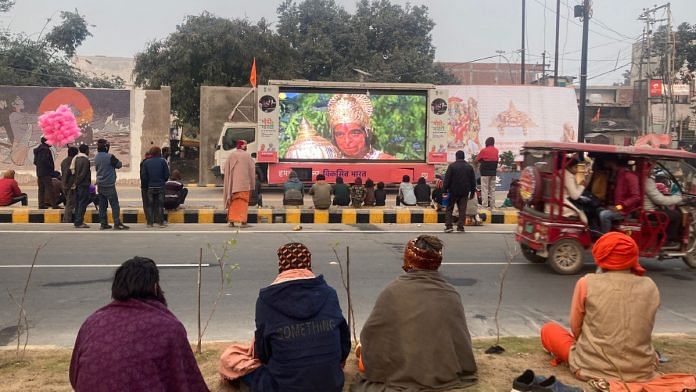

Thought provoking. I’m a Hindu and a Ram bhakt. Just read Ayodhya the dark night. This tussle between liberals and conservatives has historic and pre historic linkages. Possibly it happened in the indus sAraswati civilization period between them and Indo European speakers. Evidence suggest that the former were not martial, but more we will learn a s more is unearthed. Second in the historical period this must have happened between the Brahmin clergy and Buddhists – the latter ruled that soul of India for 800 years and eventually Buddhist institutions decayed (possibly because of centuries of royal patronage cut them off from lay people – ironic!) and in 8/9 century Adi Shankarcharya led to the resurgence of conservative Brahmanism. I think some of the modern Hindu angst is that that victory was short lived because of Muslim invasions and decimation of esp the North Indian aristocracy and priestly classes. Hence our kshatriya’s had to abandon our North Indian fertile gangetic to rule in the deserts of Rajasthan, forests of central india and the Himalayas. Can’t blame them. Finally in the modern era we have the infighting between liberals/seculars led by Nehru and the conservatives led by Patel. I don’t think it matters who will win this round! Urge people to learn more because the more you learn the less u know! Credit to UB40.
The author thinks of herself as an expert in several fields but writes an article that is full of inaccuracies and intends to show Hindus who believe in their faith and their religion as in poor light.
A biased article presenting a myopic view of new India and the Hindu. All religions have their fair share of magic…8ft tall people to Jonah who was swallowing by a fish and vomited alive after 3 days. It’s narrow minded thinking which selectively singles out others religions for ridicule. Ram mandir in Ayodhya has been built after one of the most intense and thorough legal scrutiny by the supreme court of India. Instead of hi-lighting how the temple has galvanised India and people of Indian origin across the globe, it chooses to trivialise the landmark moment.
Vandana should change her Hindu name to either Valentina or Vaheeda before defaming Hindus. Her sanatani name itself is a balm to hide her true anti-hindu identity.
Useless article by a self pitying author.must have been paid by number of words.Not worth wasting time on it.
The self-pitying author has a litany of woes—nobody is interested in her articles